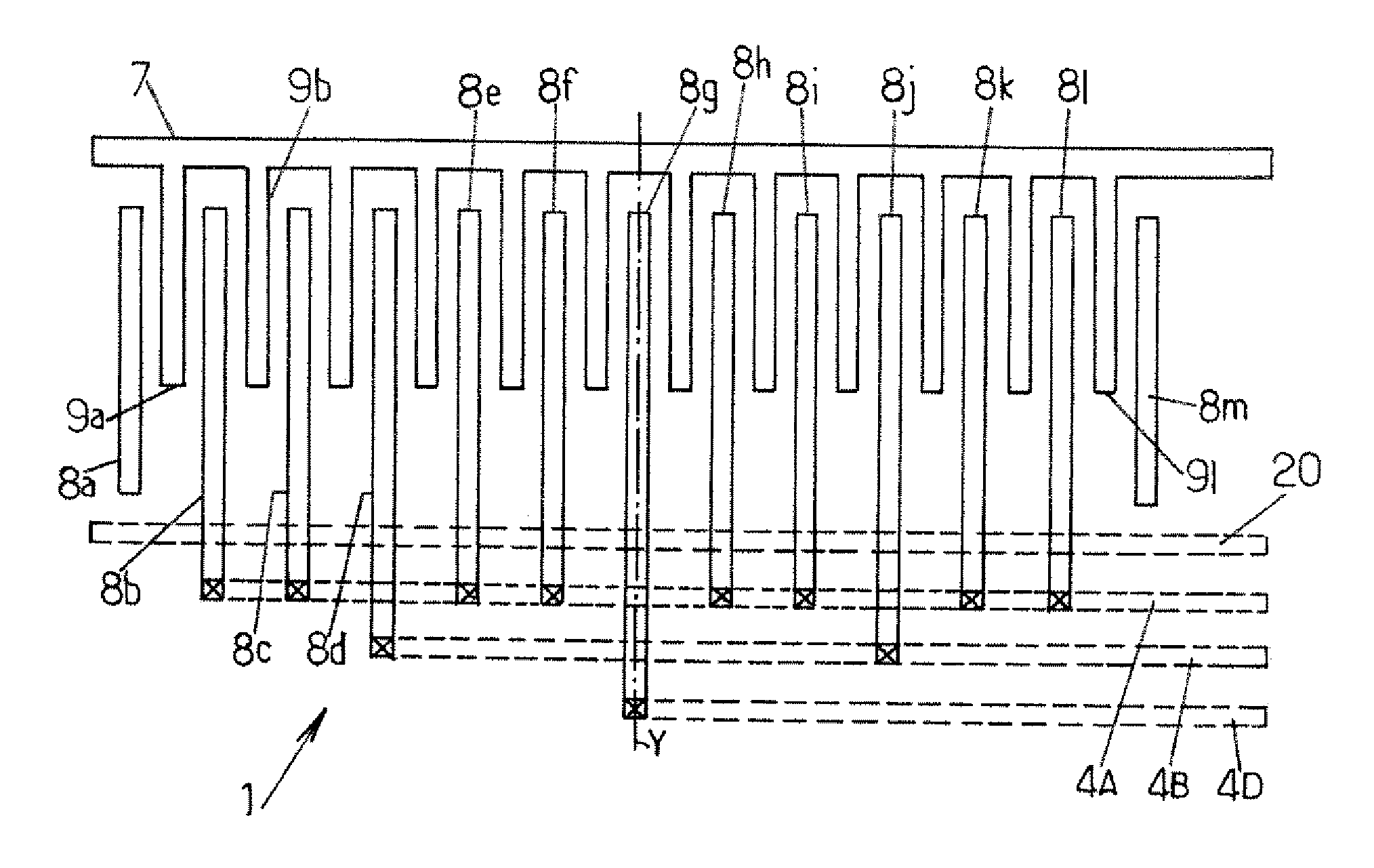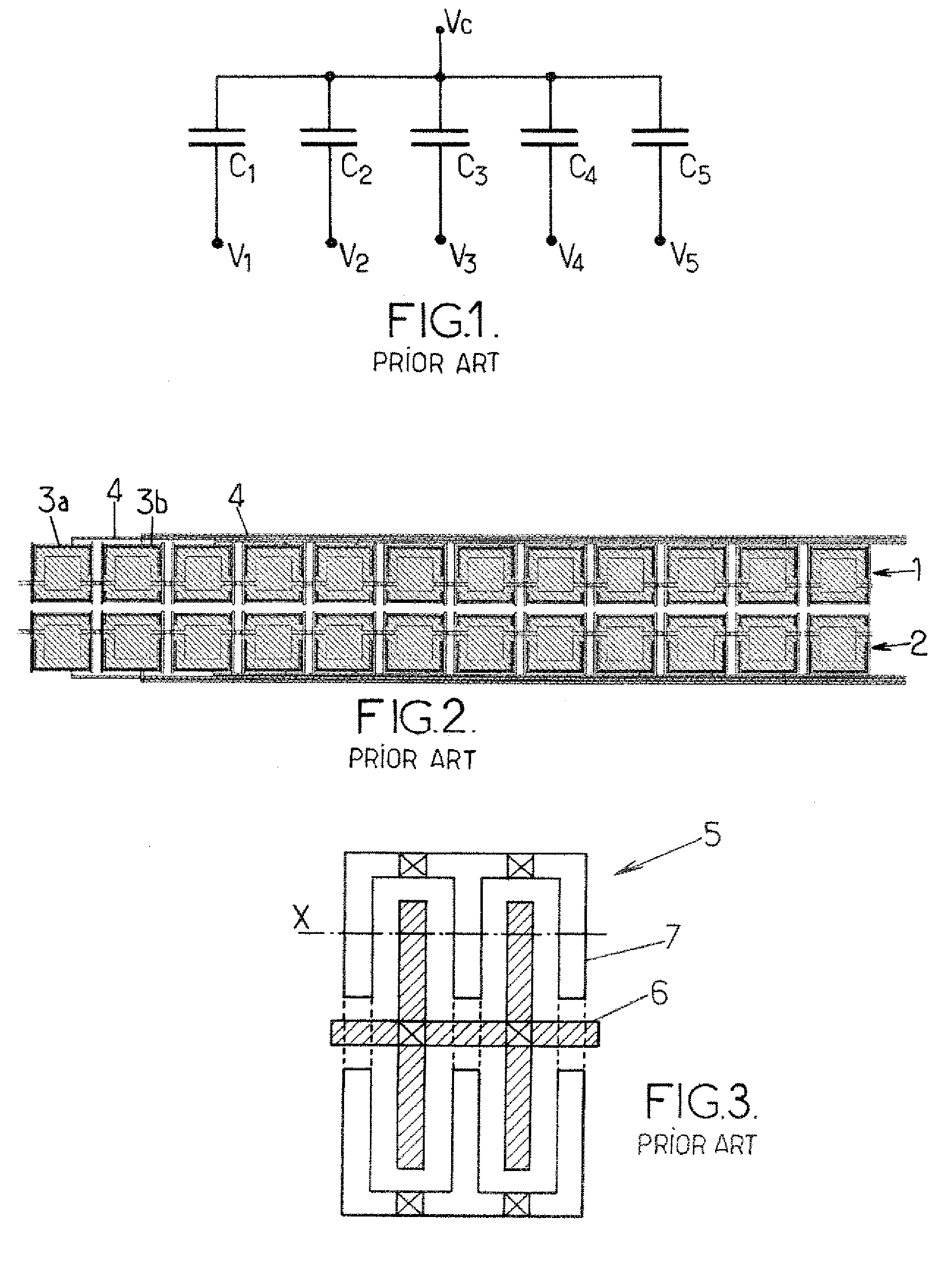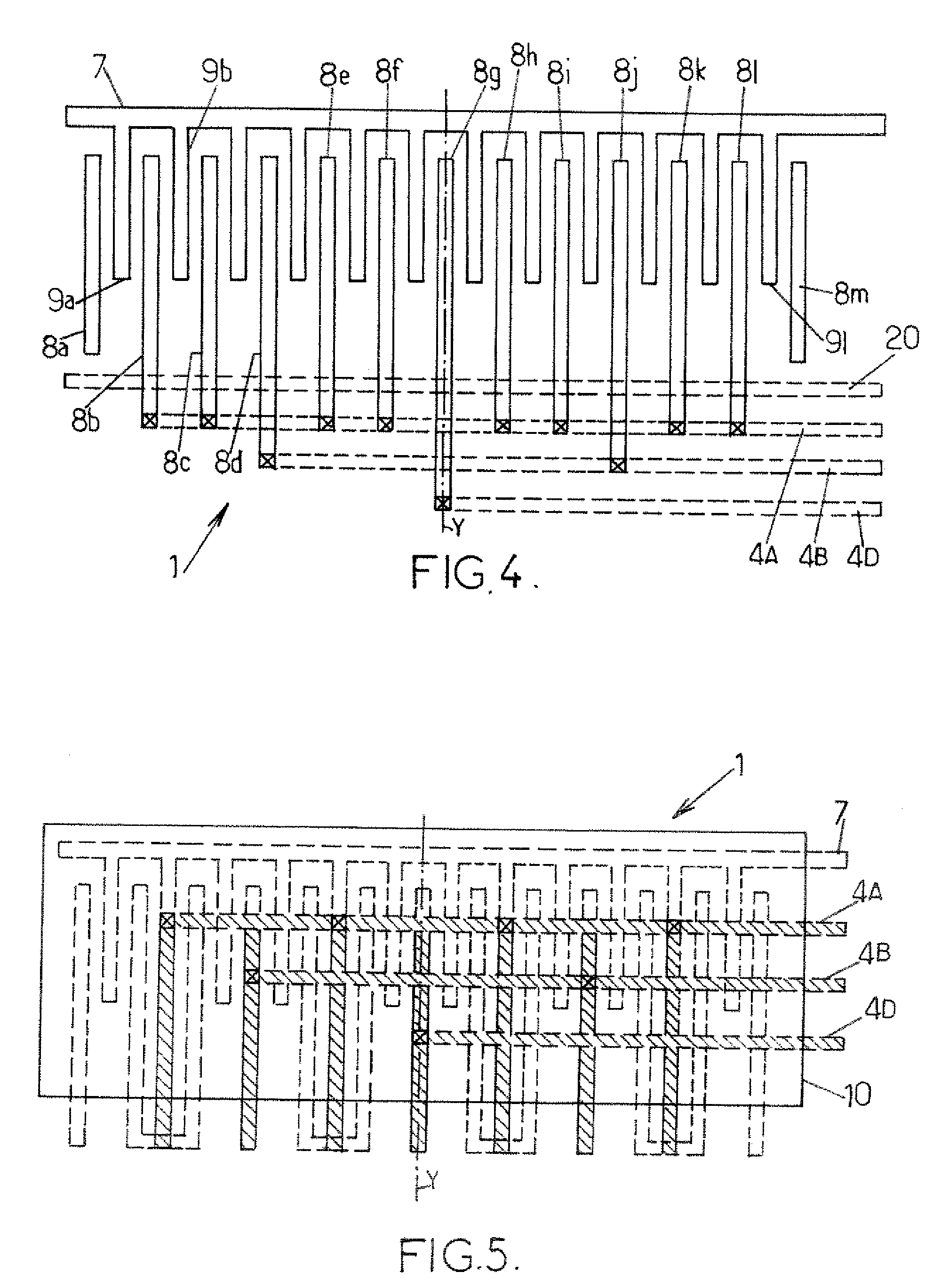Capacitive array
a technology of capacitance arrays and arrays, applied in the field of capacitance arrays, can solve the problems of low operating speed of arrays and relative high stray capacitance, and achieve the effect of either finger distribution or distribution
- Summary
- Abstract
- Description
- Claims
- Application Information
AI Technical Summary
Benefits of technology
Problems solved by technology
Method used
Image
Examples
first embodiment
[0045] The first connecting track 4A, the second connecting track 4B and the third connecting track 4D form a set of connecting tracks. In the first embodiment, this set of connecting tracks extends in the plane of the substrate layer. Naturally, these connecting tracks 4A, 4B and 4D may create stray capacitances. However, these connecting tracks 4A, 4B and 4D are located relatively far away from the elements involved in the operation of the array, that is, the teeth and the fingers. Consequently, these stray capacitances have relatively little effect on the operation of the capacitive array.
[0046] On implementation, the connecting tracks 4A, 4B and 4D are located outside the block in which the comb 7 and the fingers 8a, . . . , 8m are integrated.
[0047] As is shown in FIGS. 6A, 6B and 6C, the capacitive array may comprise the substrate layer and one or more additional substrate layers. In this case, the set of connecting tracks may belong to one and the same plane. The set of conne...
second embodiment
[0051]FIG. 5 shows an example of capacitive array according to the present invention. Just like the capacitive array represented in FIG. 4, the capacitive array represented in FIG. 5 has three capacitive entities presenting the same ratios of capacitance values. Each capacitive entity has fingers nested between the teeth of a comb 7. The fingers and the teeth of the comb 7 belong to one and the same substrate layer.
[0052] In a second embodiment, the capacitive array 1 also has a set of connecting tracks 4A, 4B and 4D above the substrate layer. A surface screen element 10 allows to insulate the substrate layer from the connecting tracks 4A, 4B and 4D. Thus, the stray capacitances generated by the connecting tracks 4A, 4B and 4D have relatively little effect on the ratios of the values of the capacitive entities. This surface screen element 10 may be substantially flat. The surface screen element 10 may be made of metal, for example of aluminium or copper. The surface screen element m...
third embodiment
[0056]FIGS. 6A, 6B and 6C are three views of an example of a capacitive unit of a capacitive array according to the present invention. FIG. 6A is a plan view, FIG. 6B is a perspective view and FIG. 6C is a side view. These three figures will be explained together.
[0057] A capacitive array comprises a number of capacitive entities of different values. Each capacitive entity comprises at least one capacitive unit 13. The capacitive entities are constructed from capacitive units. Each capacitive entity is made up of a whole number of capacitive units,
[0058] The capacitive unit 13 comprises two teeth 9a1 and 9b1 of a comb 71 and a finger 81 nested between these teeth 9a1 and 9b1. This comb 71 and this finger 81 belong to a given substrate layer. For each capacitive entity, this substrate layer comprises a set of fingers. Advantageously, each set of fingers is constructed from a basic element with just one finger.
[0059] As illustrated in FIGS. 6A and 6C, the teeth 9a1 and 9b1 and the f...
PUM
 Login to View More
Login to View More Abstract
Description
Claims
Application Information
 Login to View More
Login to View More - R&D
- Intellectual Property
- Life Sciences
- Materials
- Tech Scout
- Unparalleled Data Quality
- Higher Quality Content
- 60% Fewer Hallucinations
Browse by: Latest US Patents, China's latest patents, Technical Efficacy Thesaurus, Application Domain, Technology Topic, Popular Technical Reports.
© 2025 PatSnap. All rights reserved.Legal|Privacy policy|Modern Slavery Act Transparency Statement|Sitemap|About US| Contact US: help@patsnap.com



